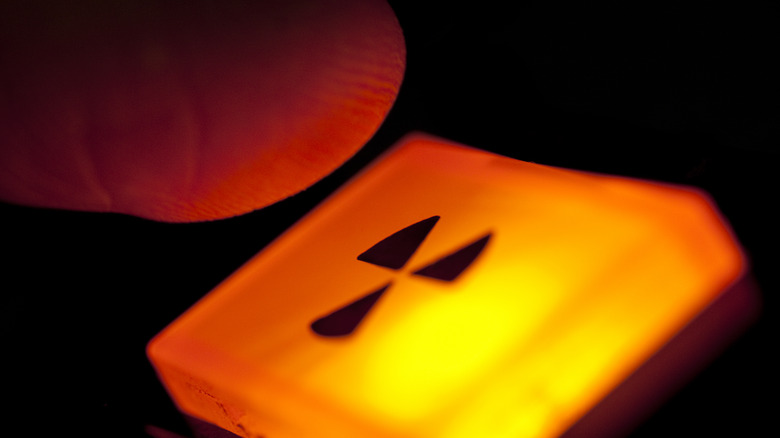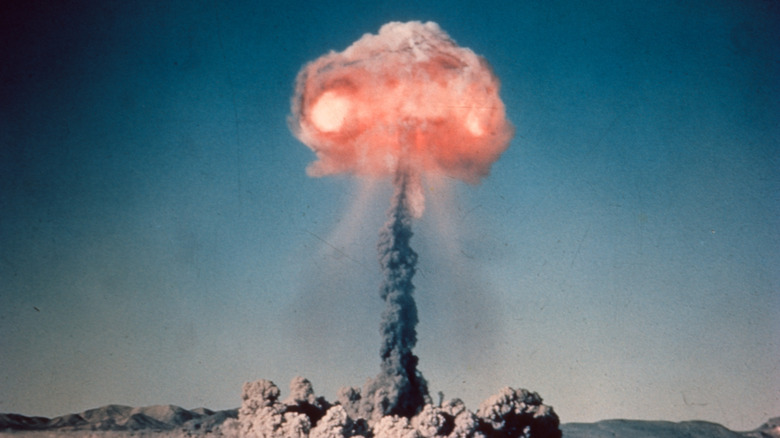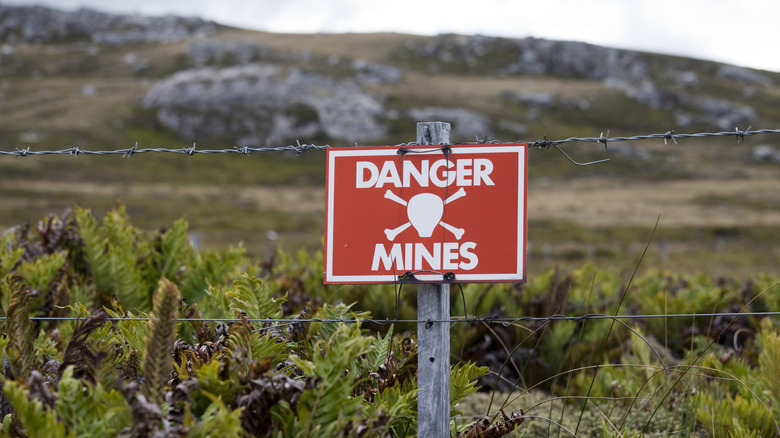The Blue Peacock: Britain's Strange Cold War Nuclear Land Mine
Most pictures of a peacock show off its bright, shimmering neon plumage fanned out in a wildly extravagant display. The native national bird of India is indeed mesmerizing and, through the ages, has been linked with strength, the divine, immortality, and royalty. So when the British decided to name a Cold War nuclear landmine the Blue Peacock — something that would most certainly be flashy and powerful — the name seemed appropriate.
After World War II, Germany was divided between France, Great Britain, the United States, and the Soviet Union. The capital city of Berlin — located in Russia's portion – was further split into four occupied zones. The concept was messy and teeming with potential problems, especially within Berlin.
Despite working as allies during WWII, the United States and the Soviets were anything but friends after. The Russians felt betrayed by their "allies" when they weren't given much say in how things would play out in Europe, especially after millions of its people died fighting against the Nazis. In fact, the Soviets felt the loss of so many lives was the direct result of how long it took the U.S. to enter the war in the first place. On the flip side, the Americans feared Joseph Stalin, the premier (and dictator) of the Union of Soviet Socialist Republics (USSR), would attempt to spread communism as far and wide as possible.
The Cold War's atomic deterrent
Things escalated quickly. In 1948, the Soviets tried (unsuccessfully) to blockade portions of West Berlin. This led the U.S. and its allies to form the North Atlantic Treaty Organization (NATO) in April 1949. That same year, the Soviets went and test-fired an atomic warhead for the first time. In 1950, North Korea, backed by Russia, invaded South Korea, supported by the U.S., and thus began the three-year Korean War. Then, in 1955, the USSR and its Communist associates formed the Warsaw Pact.
By then, Great Britain had enough. The Royal Armament Research and Development Establishment (RARDE) at Fort Halstead in Kent began devising a way for the country to protect itself should the USSR decide to invade nearby allied nations. This was a genuine threat that seemed very imminent at the time.
Soon, the British Army's engineer-in-chief developed a weapon to do just that — the Blue Peacock. The prevailing theory was that somehow a strategically placed nuke was, in fact, "particularly suitable for use in demolitions" because it was capable of causing "large-scale destruction." That destruction would be two-fold in that it would not only destroy everything within its explosive sphere but keep the enemy from reoccupying the area because the radioactive fallout would contaminate it indefinitely.
Since the material needed to create nuclear fission was hard to come by, the Brits decided they would reuse components already used by the Royal Air Force's (RAF) Blue Danube single-stage atom bombs.
The plutonium powered peacock
At the heart of the 16,000-pound (8 tons) Blue Peacock was a plutonium core surrounded by two explosive firing units. All of that was wrapped in basically what amounted to a large steel can that made it look somewhat like a boiler. Engineers estimated that it would produce a 10-kiloton blast that, if placed on the surface, would create a crater 375 feet in diameter. However, if buried 35 feet underground, the hole left behind would be much bigger — 640 feet in diameter.
The Brit's original plan called for ten Blue Peacock mines to be garrisoned in Germany with the British Army of the Rhine. If the Soviets invaded, they would quickly be dispersed and either buried, left camouflaged above ground, or dropped in a body of water along routes the Russian army was most likely to take.
The landmines could be detonated by wire, but had to be located within a three-mile radius of the bomb. Alternately, they could be placed on an eight-day timer, but the guesswork involved with that was tricky at best. They were even rigged to prevent sabotage. If the enemy tried to move or defuse them in such a way as to cause the casing to lose pressure, a tilt switch activated the detonator, and 10 seconds later... boom.
The Blue Peacocks were fraught with issues, not the least of which was the environmental radiological decimation they would unleash. However, a more practical flaw was discovered.
Don't call the Blue Peacock a chicken
European winters were harsh, and the cold could affect the intricate components, causing them to either explode prematurely or not at all.
Initially, fiberglass was stuffed inside to try and blanket the internal mechanism from the cold, but testing proved that to be an unacceptable solution. Another option — one that was quite literally discussed and written down as proof of concept – was to place live chickens inside the casing with the thought that their body heat would keep the components warm.
The plan was to provide enough feed to keep the chickens alive for 10 days, long enough for the eight-day timer to function. The feed was also supposed to keep the birds preoccupied and away from the internal mechanisms. Except it didn't do that, and chicken wire was added to prevent them from damaging things.
Yes, the plan was absurd, but the fear of a Soviet invasion was real. Fortunately for the world, saner minds prevailed, and the Blue Peacock project was scrapped in February 1958 for a variety of reasons: Massive nuclear fallout wasn't acceptable, burying nukes in Allied soil probably wouldn't go over well, and even the strategic storing of the landmines themselves would be an issue.
One of the two existing (and inert) prototypes was destroyed during testing, while the other was at one time held in the historical collection of the Atomic Weapons Establishment (AWE) in the United Kingdom.



